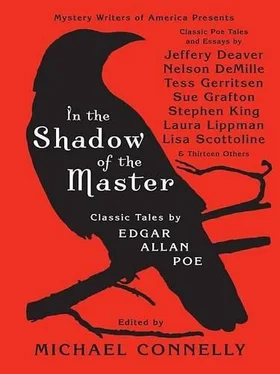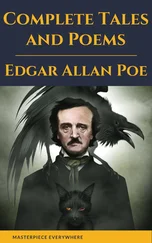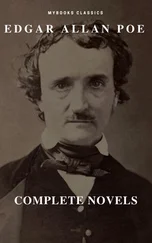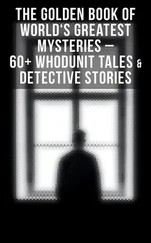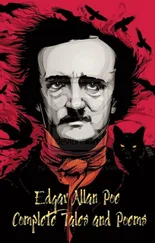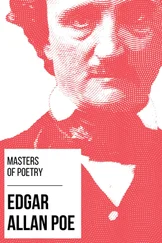So much commentary has been written about Edgar Allan Poe over the last century and a half that it seems unnecessary to add more. Unless, of course, one has something new to say, which is unlikely, though that’s never stopped academic writers.
This is my way of saying that I’m not going to try to outshine the Poe scholars who delve deep into the mind and writings of Edgar Allan Poe and who allude to Jung, Freud, and the collective unconsciousness. Not to mention mythopoeic inevitability. Instead, I’m going to fall back on the safety of a personal narrative, which recounts my introduction to Edgar Allan Poe.
This story begins in 1954 when I was eleven years old, so if the details seem fuzzy, you’ll understand.
Three-D movies were big in the mid-1950s, and I made it a point not to miss any of them, no matter how badly they’d been reviewed by my peers who’d scraped up the twenty-five cents before I did. In 1954 the hot 3-D movie that everyone was raving about was Phantom of the Rue Morgue . I didn’t know what a rue morgue was, but I did know that The Phantom was a good comic strip. I’d also never heard of Edgar Allan Poe, and I didn’t know that Poe’s short story, upon which the movie was loosely based, had been titled “The Murders in the Rue Morgue.” That was irrelevant to me, and apparently, also to Hollywood. In any case, my classmates who’d seen the movie set me straight on the meaning of the title (a rue is like a street) and gave the movie a solid rating of “piss your pants.”
I grew up in Elmont, a small community on Long Island, New York, which consisted mostly of postwar housing tracts. Within this community was a new movie theater within walking distance of my house, which in those days meant two miles. Lying between the theater and my house was-spooky music, please-a cemetery. But this was not the kind of horror-flick churchyard cemetery that I associated with ghosts, ghouls, zombies, werewolves, vampires, or any other species of the living dead; this was a nice Jewish cemetery, and who ever heard of a Jewish vampire? The cemetery, Beth David by name, actually bordered the backyard of my house, and lying as it did in the center of the town, it was a good shortcut to and from a lot of places, including the movie theater.
I had lived peacefully with this cemetery since we’d moved into the house, about six or seven years before, and from my second-floor bedroom window I could see the neat green acres of Beth David and rows and rows of polished granite tombstones. During the day the cemetery was filled with funeral processions, workers, and visitors, and my only fear in crossing this burial ground was the possibility of getting chased by the cemetery guards who patrolled in marked cars. I never got caught, and years later I became the star sprinter (one-hundred-yard dash in ten flat) of the Elmont Memorial High School track team.
My only experience with the cemetery at night was to stare at it now and then from my bedroom window. In five or six years of looking, I never once saw anything come out of a grave, or move that shouldn’t move; the trees moved in the wind, the headlights of patrol cars moved on the roads. That was about it. So my proximity to, and trespassing in, the cemetery in my backyard made it a familiar place that held no terrors for me and caused no childhood mental trauma that needed to be addressed, then or now.
Except for that one time when I took the shortcut through the cemetery following a late-Saturday-afternoon showing of Phantom of the Rue Morgue in 3-D color.
The movie, by today’s standards, would barely raise a hair on the back of anyone’s neck. But in 1954, when you’re eleven, weird makeup, creepy music, and blood-splatter patterns can easily send you sprinting up the aisle to the popcorn stand.
A quick Internet search of Edgar Allan Poe filmography informs me that Karl Malden, before he learned how to act, played the part of the Rue Morgue mad scientist, Dr. Marais. Logging in a better performance was a trained gorilla, whose name is lost to cinema history, and also Merv Griffin, of all people, who played a French medical student. I remember the mad scientist and the gorilla, but not Merv. The plot, such as it is, is simple: Dr. Marais uses the gorilla to exact revenge on various beautiful women who have spurned him. Each of these ladies has been given a jingling bracelet that attracts the killer gorilla. I know you want more of this plot, but I don’t want to spoil your next Netflix selection. Suffice it to say, whenever these young ladies walk along a street, alone, at night, the tinkling bracelet is heard by the sharp-eared, preprogrammed gorilla. Why no one notices this gorilla is not something to be examined too closely; I never gave it much thought myself, and neither did the adults who made the movie. We’re talking here of a major suspension of disbelief, and kids are good at that. Kids are also good at Pavlovian response and getting themselves scared out of their susceptible little minds, so when those pretty ladies jangled their bracelets, the movie theater let out a collective gasp and a few involuntary squeals. The future do-gooders among the mostly preadolescent crowd yelled out warnings to the strutting tarts.
The really scary parts of the movie, however, were the 3-D shock effects. You just never knew when something was going to hurtle at you from the screen, and if you can remember this, you’ll verify that literally the entire audience in a 3-D shocker screamed and ducked. I mean, popcorn flying, Cokes splashing, and 3-D glasses being ripped from faces by the G-forces created by rapidly moving heads, arms, and bodies.
Bottom line on Phantom of the Rue Morgue is, it sucked. But it was scary.
It was fall or maybe winter, and by the time I and a few friends left the theater about 5:00 P.M., it was getting dark. The rule was, “Get home as soon as the streetlights come on.” They’d come on, and I was late. My cell phone hadn’t been invented yet, and the pay phone on the corner cost a nickel, or maybe a dime, and no one wanted to splurge on that just to say we were alive and running late. We mostly walked or biked wherever we went, and the concept of a parent coming to pick us up was not part of the zeitgeist of that simpler, safer, and unpampered age. Our parents had taught us well: however you got there, get back the same way.
Well, I’d walked to the movie theater, and now I had to walk home.
From the corner of Elmont Road and Hempstead Turnpike, where the theater was, it was about two miles, if I took the circuitous street route. However, if I took the direct route through the cemetery…
Two of the three guys I was with lived in the opposite direction, so the cemetery was not part of their plan. But the third guy-who I’ll call Jack so as not to embarrass him a half century later or call into question the size of his developing cojones-lived down the block from me, so quite naturally I thought I’d have company on my quick trip through the land of the living dead. Jack, however, had other ideas and informed me that he’d rather be late for dinner than be dinner for a werewolf.
I should have followed his line of reasoning, but I was in the early stages of mastering the art of the bad decision-really nothing more than macho recklessness-that would later reach its crowning stupidity when I quit college, joined the Army, and volunteered for Vietnam.
At this point in my life, however, I really wanted company on my road toward discovering the limits of my courage and idiocy, so I said to Jack, “You’re a chicken!”
“Am not!”
“Chicken, chicken!” And I imitated a chicken.
Today, Jack would tell me to go f**k myself, but I think he replied, “Ah, you’re nuts!” and ran off toward the safety of home along lighted streets, slowing only long enough to turn and deliver a Parthian shot. “You’re gonna diiiie!”
Читать дальше
